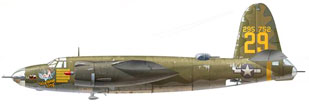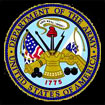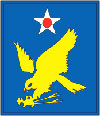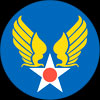| North
High School Wall of Honor William Lawdahl Friar Class of June, 1943 |
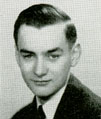 |
|||||||||||||||||||||||||||||||||||||||||||||||||||||||||||||||||||||||||||||||||
| Research done by Claradell Shedd, Class of 1953. PAGE IN PROGRESS | ||||||||||||||||||||||||||||||||||||||||||||||||||||||||||||||||||||||||||||||||||
| William Lawdahl Friar | ||||||||||||||||||||||||||||||||||||||||||||||||||||||||||||||||||||||||||||||||||
| William was a member of North High's class of June, 1943. His next of kin was Mrs. Ruth Friar who lived at3835 9th Street, Des Moines, IA. William's service number was __________. | ||||||||||||||||||||||||||||||||||||||||||||||||||||||||||||||||||||||||||||||||||
|
||||||||||||||||||||||||||||||||||||||||||||||||||||||||||||||||||||||||||||||||||
| *Gary Air
Force Base; San Marcos, TX Plans to open a military installation in San Marcos at Gary Air Force Base began in 1942. The site chosen for San Marcos Army Air Field was six miles east of town on State Highway 21 in Caldwell County. The city of San Marcos raised $100,000 to purchase 500 acres of land, and the federal government arranged for the purchase of another 1,500 acres. Construction began in late summer 1942, and the field was completed on December 15 of that year. The mission of the new installation was navigator training, and the first unit to occupy the field was the 2536th Army Air Forces Base Unit, commanded by Lt. Col. John F. Hutchison. The first class of trainees arrived on February 13, 1943. With classes arriving about every three weeks, by September 1945, when the navigator mission ended, roughly 10,000 navigators had been trained. **McCook Army Airfield, NE McCook Army Airfield was activated on 1 April 1943. It is located nine miles (14 km) northwest of McCook, a city in Red Willow County, Nebraska, United States and is southwest of Lincoln, Nebraska. It was constructed in 1943 . The 2,100-acre (8.5 km2) site is bordered on all sides by level farm ground. McCook AAF was one of eleven United States Army Air Force training bases in Nebraska during World War II. The 2,100-acre (8.5 km2) base included three 150 by 7,500-foot (2,300 m) concrete runways, five hangars, and barracks for 5,000 men. It operated with three divisions: Base Services (hospital, chapel, theater, band, gymnasium, fire station, post office, photo lab, library, and military police); Maintenance and Supply (air service groups, post engineers, machine shop, warehouses); and Training (celestial navigation, gunnery and bombing, communications, radar, and aircraft maintenance). Approximately 110 buildings and structures were constructed. The airfield was activated on 1 April 1943, under the command of Second Air Force Headquarters, Colorado Springs, Colorado. The host unit at the airfield was the 520th Operational Training Unit as part of Air Technical Service Command. The 520th was assigned to the 16th Bombardment Operational Training Wing (August 1943 - March 1944), then transferred to the 17th Bombardment Training Wing in March 1944 for B-29 training. McCook provided final training of heavy bomber crews for the B-17 Flying Fortress, Consolidated B-24 Liberator and Boeing B-29 Super Fortress. Some 15,000 servicemen and 500 civilians were stationed at McCook. Bomber crew members received final proficiency training at the field before deployment in North Africa, Europe, and Pacific Theater of Operations. Among the bomb groups trained at McCook were elements of the 8th, 15th, and 20th Air Forces. These bomb groups saw combat in the European, Mediterranean, and Pacific Theaters. 9th Bombardment Group (Very Heavy) (May - November 1944) 1st, 5th, 99th and 430th Bombardment Squadrons Deployed to Twentieth Air Force in Tinian (B-29 Superfortress). ***Alamogordo Air Field; Alamogordo, NM On 10 June 1942 Alamogordo Army Air Field (AAF) was established at a site six miles (10 km) west of Alamogordo, New Mexico. Initial plans called for the base to serve as the center for the British Overseas Training program. The British hoped to be able to train their aircrews over the open New Mexico skies. However, everything changed when the Japanese launched a surprise attack against the Hawaiian Islands on 7 December 1941. The British decided to no longer pursue its overseas training program, and the United States military saw the location as an opportunity to train its own growing military. Construction began at the airfield on 5 February 1942 and forces began to move into Alamogordo Bombing and Gunnery Range on 14 May 1942. The base was under the command of the United States Army Air Force (USAAF) Second Air Force with its Headquarters at Colorado Springs, Colorado. The base was equipped with aprons, runways, taxiways and hangars during the summer of 1942 being renamed Alamogordo AAF in June. From 1942-1945, Alamogordo AAF served as the training grounds for over 20 different groups, flying initially Boeing B-17 Flying Fortresses then Consolidated B-24 Liberators. Typically, these groups served at the airfield for several months, training their personnel before heading to combat overseas. |
||||||||||||||||||||||||||||||||||||||||||||||||||||||||||||||||||||||||||||||||||
|
||||||||||||||||||||||||||||||||||||||||||||||||||||||||||||||||||||||||||||||||||
|
||||||||||||||||||||||||||||||||||||||||||||||||||||||||||||||||||||||||||||||||||
|
||||||||||||||||||||||||||||||||||||||||||||||||||||||||||||||||||||||||||||||||||
| 11/13/10. Living in VA. | ||||||||||||||||||||||||||||||||||||||||||||||||||||||||||||||||||||||||||||||||||
| Music: "Wind Beneath My Wings" | ||||||||||||||||||||||||||||||||||||||||||||||||||||||||||||||||||||||||||||||||||
| Home
|
Back/allyears |
WWI |
WWII |
Korea |
Vietnam |
Afghanistan/Iraq |
Lyrics
|
Refs/Awards |
Contact ©2025-csheddgraphics All rights reserved. All images and content are © copyright of their respective copyright owners. |
||||||||||||||||||||||||||||||||||||||||||||||||||||||||||||||||||||||||||||||||||

